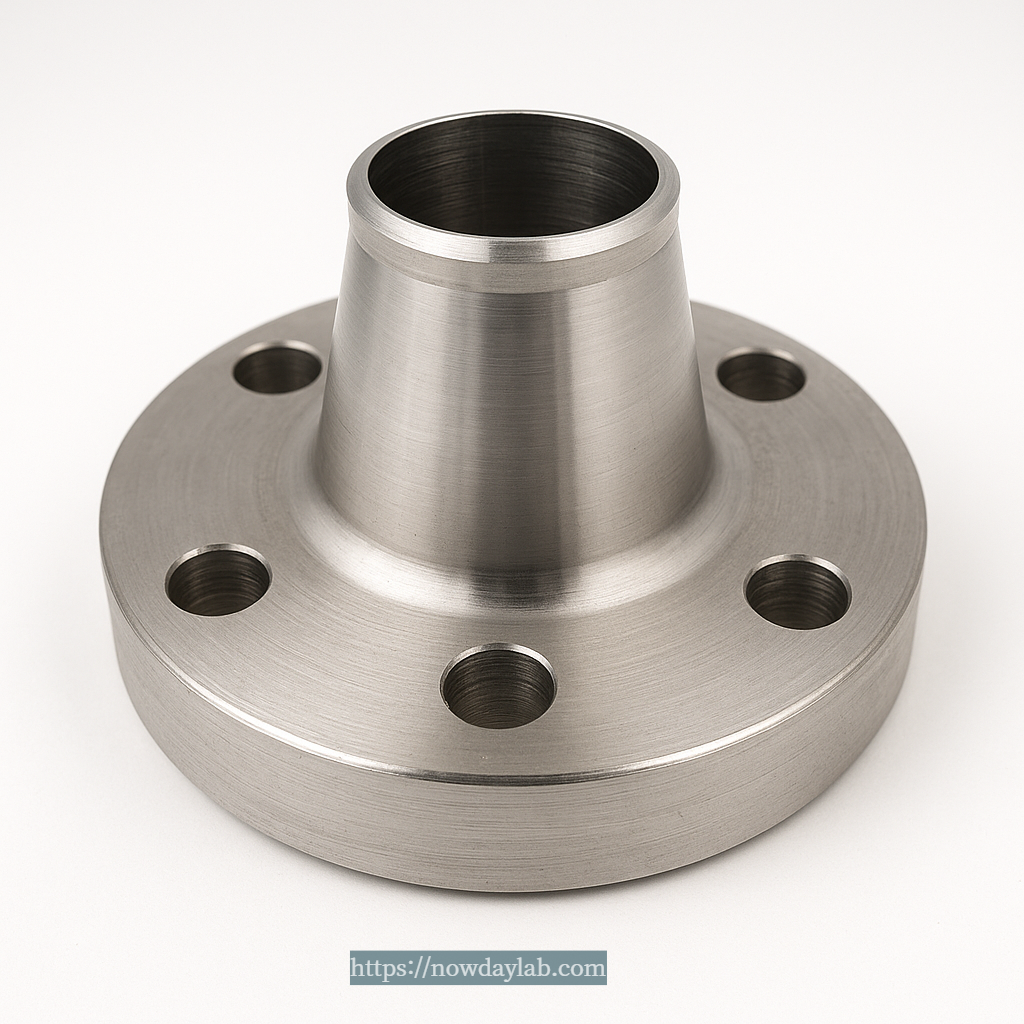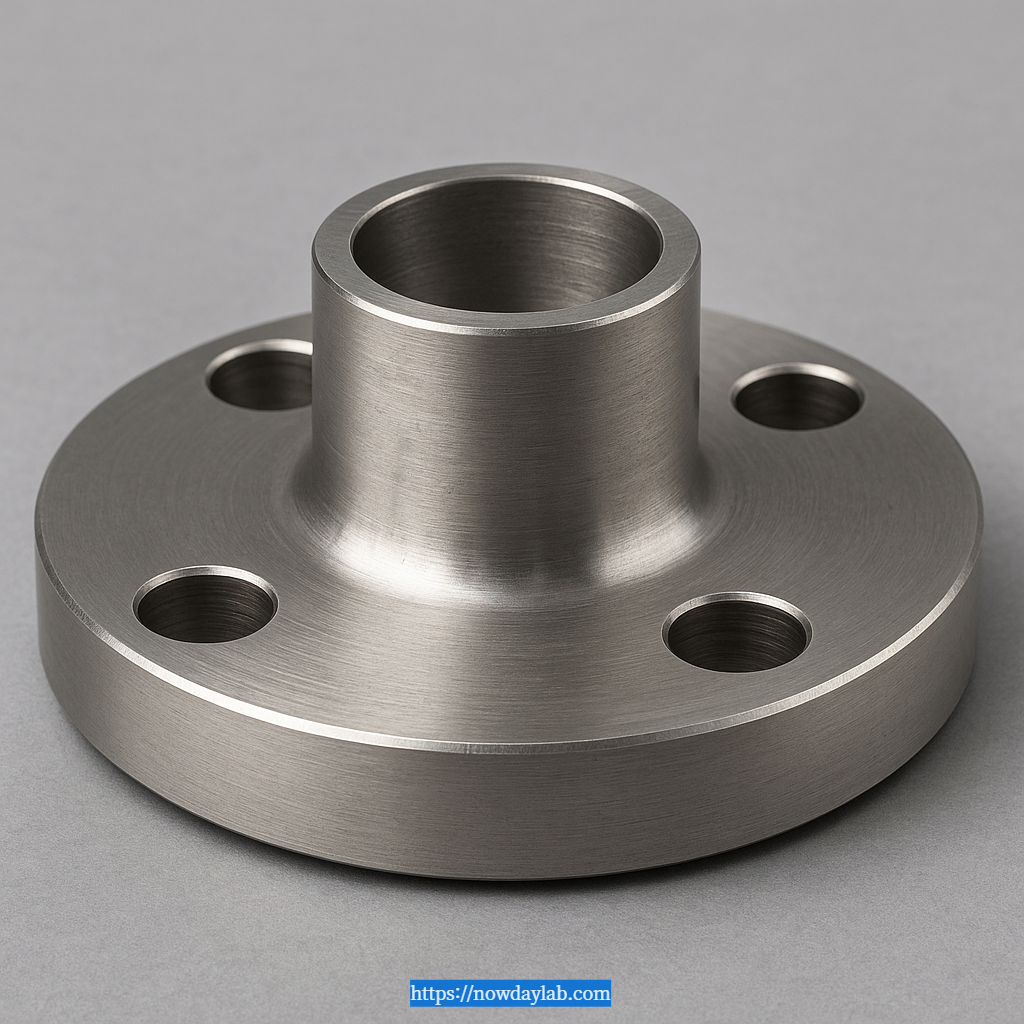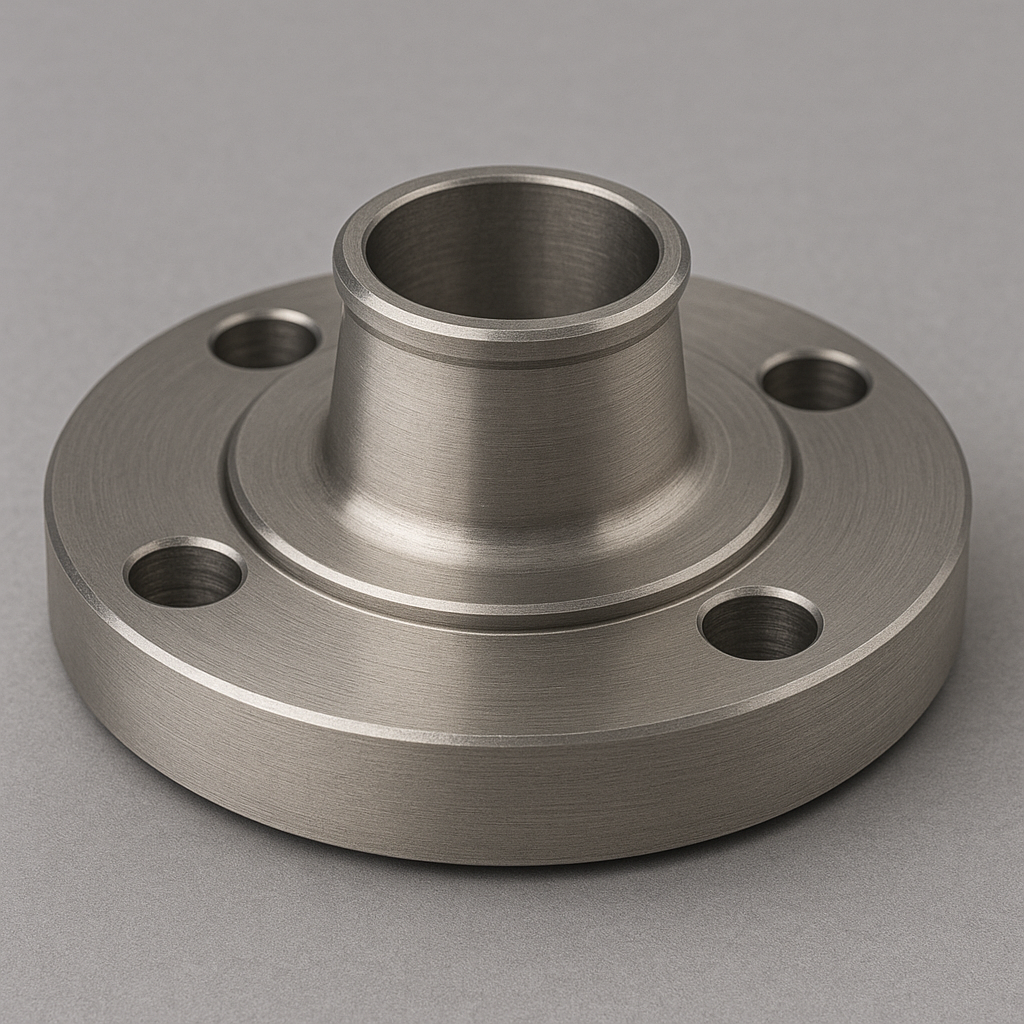Flanges may look simple, but each type has a specific role in how a piping system handles pressure, temperature, and vibration. Using the wrong flange type can lead to leaks, misalignment, or even catastrophic failure.
This guide explains the most common flange types used in process, chemical, and power plants — what they’re for, where to use them, and what to avoid.

1. Weld Neck Flange (WN)

Description:
A weld neck flange has a long tapered hub that transfers stress to the pipe, reducing high-stress concentration at the base of the weld.
It’s welded to the pipe using a butt weld, which gives excellent mechanical strength and flow integrity.
Best For:
High-pressure, high-temperature, or cyclic service.
Advantages:
- Excellent fatigue and stress resistance
- Smooth bore transition, minimal turbulence
- Strongest connection among all flange types
Common Applications:
Pressure vessels, steam lines, chemical reactors, and process piping.
2. Slip-On Flange (SO)

Description:
The slip-on flange simply “slips over” the pipe and is fillet welded on both sides.
It’s easy to install and align, making it popular in non-critical or low-pressure systems.
Best For:
Low-pressure or non-cyclic service.
Advantages:
- Easy alignment and low fabrication cost
- Quick installation in large-diameter lines
Limitations:
- Weaker fatigue resistance due to fillet welds
- Not suitable for high pressure or cyclic stress
Common Applications:
Cooling water systems, air lines, and general utilities.
3. Blind Flange (BL)

Description:
A blind flange has no bore and is used to close the end of a pipeline or vessel nozzle.
It allows access to the line for inspection, maintenance, or pressure testing.
Best For:
Sealing or terminating a line or nozzle.
Advantages:
- Easy to remove and reinstall
- Provides full isolation for hydrotest or maintenance
Common Applications:
Pressure vessel ends, piping terminals, and test closures.
4. Socket Weld Flange (SW)

Description:
The pipe is inserted into the socket end of the flange and fillet welded around the outer edge.
This design ensures smooth bore alignment and good flow characteristics.
Best For:
Small-diameter, high-pressure systems.
Advantages:
- Strong, leak-resistant joint
- Better internal surface finish compared to slip-on
Limitations:
- Not suitable for larger diameters or cyclic vibration
- Fillet welds require precise workmanship
Common Applications:
Instrumentation lines, hydraulic systems, and small-bore process piping.
5. Threaded Flange (TH)

Description:
A threaded flange connects to a pipe with matching external threads.
No welding is required, which makes it ideal for systems where welding is not feasible.
Best For:
Low-pressure, non-welded systems such as gas or air lines.
Advantages:
- No welding needed
- Easy to assemble and disassemble
Limitations:
- Not suitable for high temperature or pressure
- Threads can leak under vibration or stress
Common Applications:
Compressed air lines, gas systems, fire protection lines.
6. Lap Joint Flange (LJ)

Description:
A lap joint flange is used with a stub end, allowing the flange to rotate freely around the pipe.
This makes alignment during bolt-up much easier, especially for large-diameter systems.
Best For:
Corrosive systems or frequent disassembly.
Advantages:
- Easy alignment and reassembly
- Flange material can differ from pipe material (cost saving)
Common Applications:
Corrosive process lines, stainless-to-carbon transitions, and removable spool connections.
7. Comparison Table
| Type | Welding | Method | Pressure Range | Typical MaterialCommon Use |
| Weld Neck | Butt Weld | High | CS, SS, Alloy | Process piping, vessels |
| Slip-On | Fillet Weld | Low–Medium | CS, SS | Utilities, water lines |
| Blind | None | High | CS, SS | Line isolation, testing |
| Socket Weld | Fillet Weld | High (small dia) | CS, SS | Instrument lines |
| Threaded | Threaded | Low | CS, Brass | Gas or air lines |
| Lap Joint | Stub End + Flange | Medium | CS + SS | Corrosive or removable joints |
Field Notes
- For high pressure or cyclic stress, Weld Neck is always the safest option.
- Avoid Slip-On in vibrating systems — fillet welds tend to crack over time.
- Socket Weld is great for small-bore lines but must be precisely welded to avoid pocket corrosion.
- Lap Joint flanges save cost when the flange material can differ from the pipe (e.g., CS flange + SS stub end).
Conclusion
Selecting the right flange type is about more than just size or pressure rating.
Each flange design exists for a reason — to balance strength, cost, and maintenance.
Choose based on your process conditions, not just what’s on the shelf.
Pressure Vessel Testing & Inspection – What Really Happens on Site
Here’s the truth:You can have the best drawings, the cleanest welds, and still end up with a ticking bomb if your testing is sloppy.Pressure vessel testing isn’t paperwork. It’s the part where you find out if what’s on paper actually holds pressure
www.nowdaylab.com
Flange Standards & Dimension Chart – ASME / JIS / DIN Comparison
1. ANSI / ASME B16.5 – Class 150 (RF Type)(Reference: ASME B16.5-2020)2. JIS B2220 – 10K Flange Dimensions(Reference: JIS B2220-2019)3. DIN EN 1092-1 – PN16 Flange Dimensions(Reference: DIN EN 1092-1:2018)7. Size Conversion (ASME / JIS / DIN) ASME (i
www.nowdaylab.com
What Is a Pressure Vessel? Field Notes on Design, Types, and Safety Codes
IntroductionAsk anyone who’s spent a few years around plants —a pressure vessel isn’t just a big metal tank.It’s the heart of any process line. When one goes wrong, you’re not just stopping production; you’re flirting with disaster.These vessel
www.nowdaylab.com


